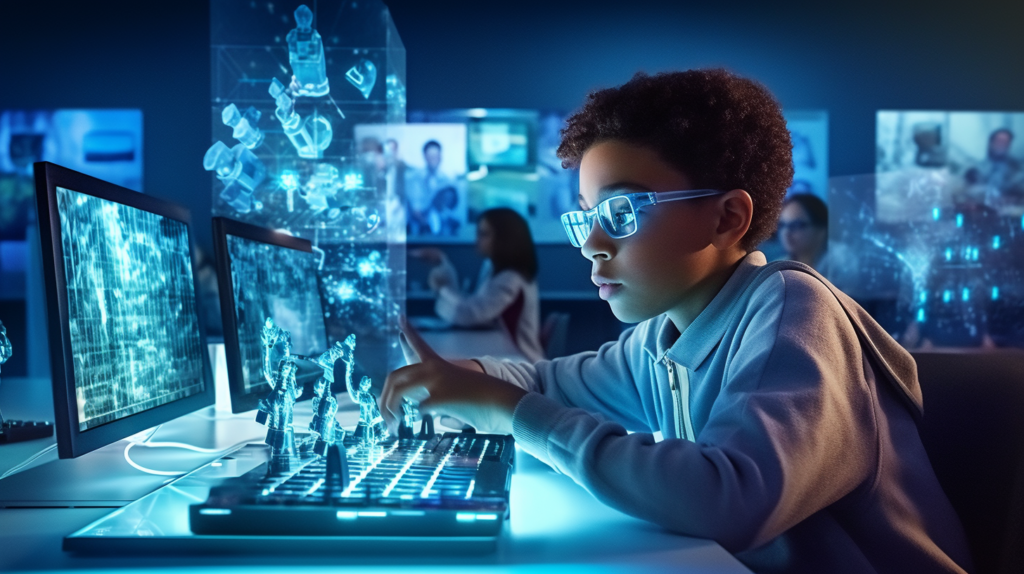Imagine a world where students can learn at their own pace, with personalized materials that cater to their individual needs. This is the promise of generative AI in education, a field that is rapidly evolving and has the potential to revolutionize the way we teach and learn.
What is Generative AI?
Generative AI, a subfield of artificial intelligence (AI), refers to a class of algorithms that can be used to create new and original content. This content can take many forms, including text, images, code, and even music. Generative AI models are trained on massive datasets of existing content, and they learn to identify patterns and relationships within that data. This allows them to generate new content that is similar to the data they were trained on, but also unique in its way.
Generative AI’s Potential in Education
The potential applications of generative AI in education are vast and far-reaching. Here are a few examples:
- Personalized Learning Materials: Generative AI can be used to create personalized learning materials for students. This could include things like customized practice problems, adaptive quizzes, and even tailored learning pathways. By tailoring the learning materials to the individual needs of each student, generative AI can help to ensure that all students are challenged and engaged.
- Adaptive Learning Paths: Adaptive learning paths are a type of learning approach that adjusts to the needs of each student. Generative AI can be used to create adaptive learning paths by tracking a student’s progress and identifying areas where they need more help. The AI can then generate targeted learning materials to address those specific needs.
- AI Tutors: The teacher shortage is a growing problem in many parts of the world. Generative AI can be used to create AI tutors that can provide students with personalized instruction and support. AI tutors can be used to supplement the work of human teachers, or they can be used to provide instruction in areas where there is a shortage of qualified teachers.
The Power of Combining Generative AI with Other Educational Technologies
While generative AI has the potential to revolutionize education on its own, it is even more powerful when it is used in conjunction with other educational technologies. For example, generative AI can be used to create personalized learning materials that are then delivered through online learning platforms. Or, generative AI can be used to create adaptive learning paths that are then implemented using learning management systems.
Challenges and Considerations
As with any new technology, there are also challenges and considerations associated with the use of generative AI in education. One challenge is that generative AI models can sometimes produce content that is biased or inaccurate. It is important to carefully evaluate the content generated by AI models before using it in the classroom. Additionally, the use of AI in education raises ethical concerns. For example, it is important to ensure that AI tutors do not replace human teachers altogether.
The Future of Generative AI in Education
The future of generative AI in education is bright. As generative AI models continue to develop, they will become even more sophisticated and effective. This has the potential to create a more personalized and engaging learning experience for all students. However, it is important to use generative AI responsibly and ethically to ensure that it has a positive impact on education.
In conclusion, generative AI has the potential to transform education by creating personalized learning materials, adaptive learning paths, and AI tutors. However, it is important to use generative AI responsibly and ethically to ensure that it has a positive impact on education. As educators, we should embrace generative AI as a tool that can help us create a more effective and engaging learning experience for all students.


